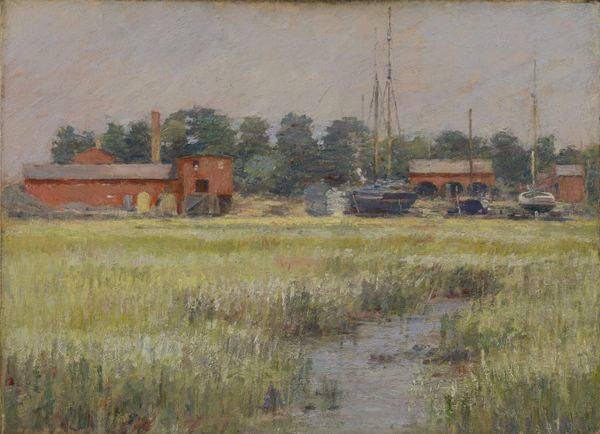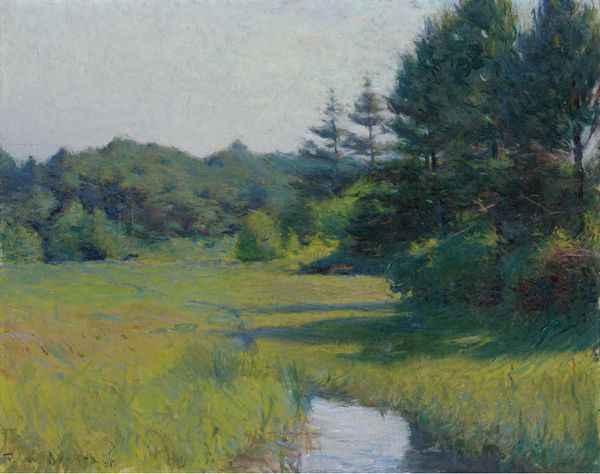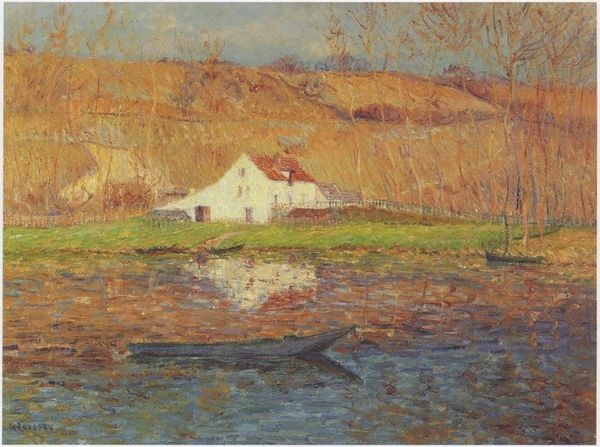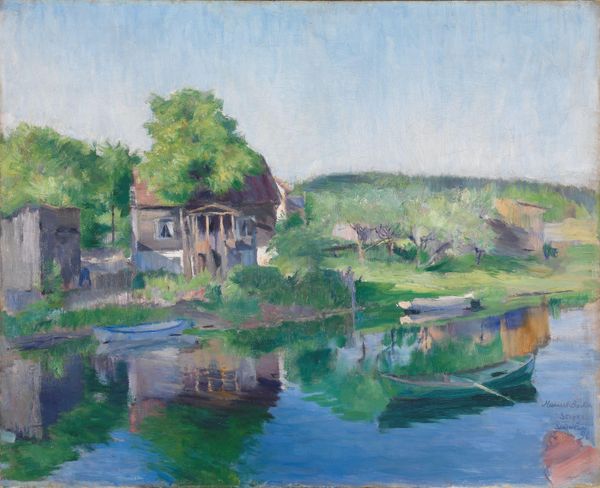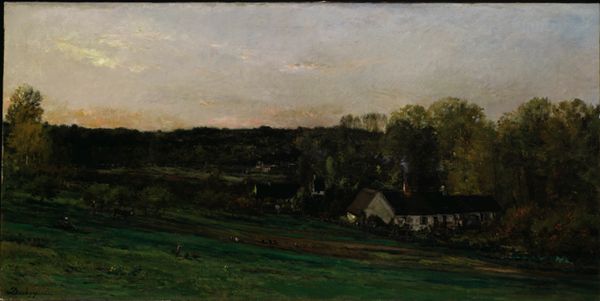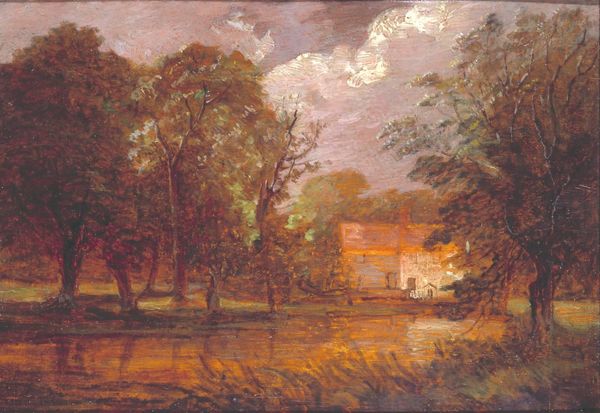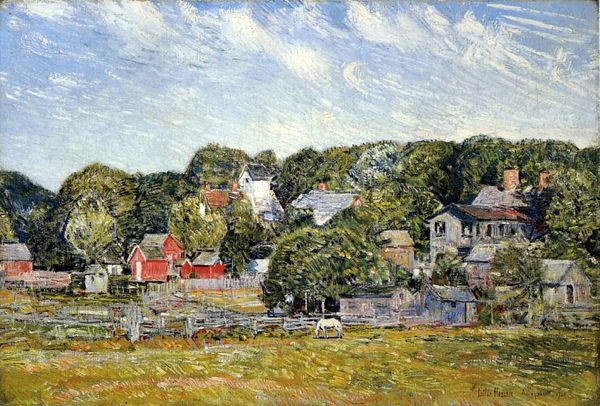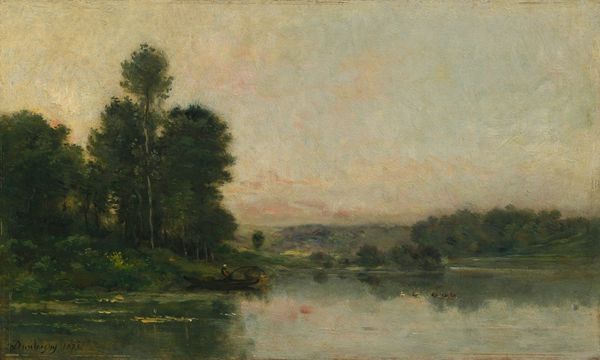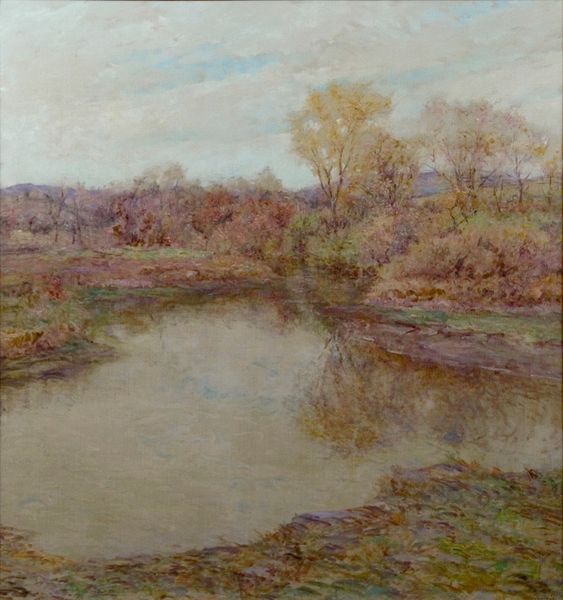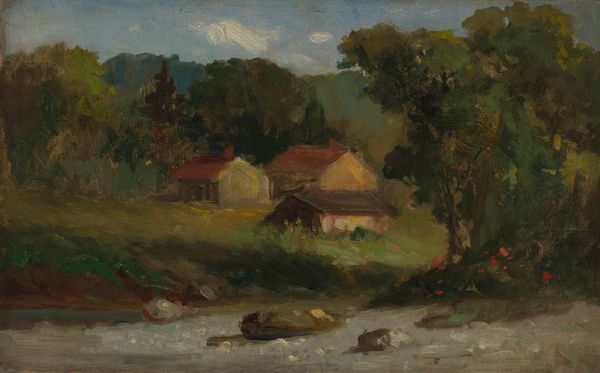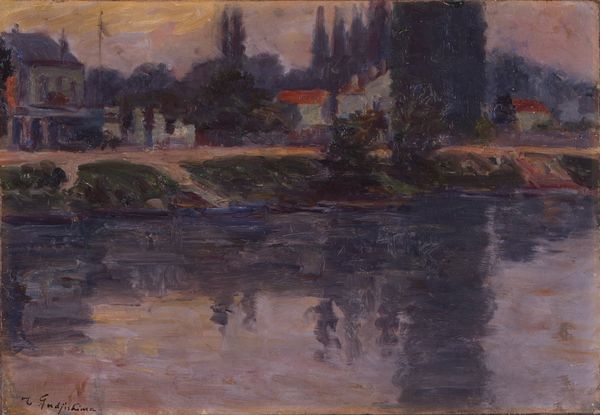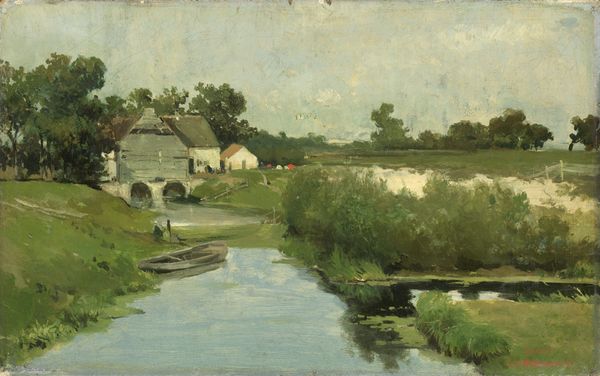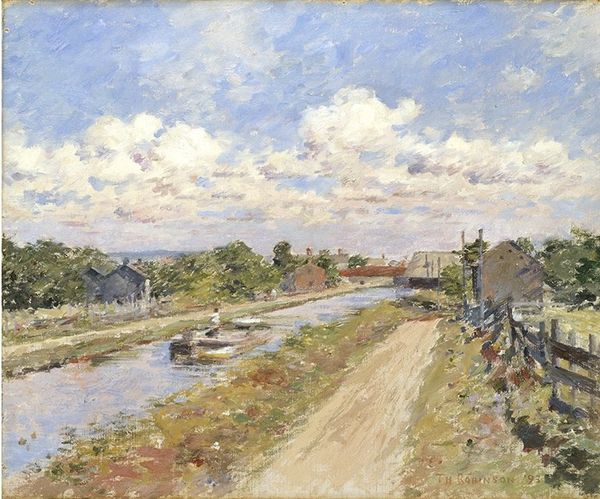
Copyright: Public domain
Theodore Robinson painted this scene of the canal lock at Napanoch, New York, likely in the late 19th century, in pastel on paper. It shows an interest in modern infrastructure – specifically the canal system that was crucial to American economic development and westward expansion in the nineteenth century. However, unlike earlier landscape painters, Robinson shies away from emphasizing this infrastructure as a triumph of American ingenuity, instead, showing it in harmony with nature. The soft pastel and muted tones contribute to the overall mood of tranquility, suggesting a modern idyll. To understand the painting better, we might consider the role of the art market and institutions in shaping the Impressionist style that Robinson adopted and adapted for American subjects. Further archival research could reveal how the cultural significance of canals evolved in the collective imagination as the railroads came to overshadow them. This image reminds us that art is always embedded in complex social and institutional networks.
Comments
No comments
Be the first to comment and join the conversation on the ultimate creative platform.
